Shift-Right Testing: Advantages and Types for Improved Software Quality
In the fast-evolving world of software development, where agility and user satisfaction are paramount, a new approach called Shift-Right Testing has emerged in software quality assurance, Similar to the Shift-Left testing approach, which was introduced earlier, Shift Right Testing advocates for testing in production or close-to-production environments, enabling organizations to identify issues in real-world scenarios. This article explores the concept of shit-right testing, its different types and approaches, and how it has the potential to transform the way software testing is approached, ultimately delivering faster time-to-market and improved overall software quality.
Using high-quality software and tools, Q-Pros has proven excellence in defect prevention and software testing. In this article, we will explore the concept of Shift-Left Testing, an introduction to its different types, and the advantages this testing approach offers its users.
Types of Shift-Right Testing
When it comes to Shift Right Testing, there are several different types of approaches that organizations can adopt. These types of Shift Right Testing include:
- Production Monitoring: this type of Shift Right Testing involves closely monitoring the production environment to identify any issues or anomalies that may arise. By leveraging various monitoring tools and techniques, organizations can gain insights into the system’s behavior, performance, and user interactions, allowing them to detect and address potential problems in real time.
- Canary Releases: In this approach, a small percentage of the user base is exposed to new features or updates before a full release. By gradually rolling out changes to a subset of users, organizations can gather valuable feedback, monitor the impact on performance, and identify any issues or bugs early on. This helps in mitigating risks and ensuring a smoother rollout to the wider user base.
- A/B Testing: A/B testing, also known as split testing: this type involves comparing two or more versions of a software feature or user interface to determine which performs better. By randomly dividing users into different groups and presenting each group with a different version, organizations can measure user preferences, engagement, and conversion rates. A/B testing in production allows organizations to make data-driven decisions and iterate on their software based on real user feedback.
- Chaos Engineering: this type of Shift Right Testing involves intentionally injecting failures or disruptions into the system to identify weaknesses and build resilience. By simulating real-world scenarios and stress-testing the system, organizations can proactively identify and address potential vulnerabilities or bottlenecks, ensuring the system can withstand unexpected events and recover gracefully.
- User Feedback and Telemetry: user feedback and telemetry data collection are essential components of Shift Right Testing. By actively soliciting feedback from users, such as through feedback forms or user surveys, organizations can gather valuable insights into user experiences, identify pain points, and prioritize areas for improvement. Additionally, telemetry data, which includes logs, performance metrics, and usage patterns, provides organizations with a wealth of information to analyze and optimize their software continuously.
Benefits of Shift-Right Testing
Shift-right testing and shift-left testing are two approaches that aim to enhance the software testing process. While shift-right testing focuses on involving testers earlier and more frequently in the SDLC, shift-left testing emphasizes the early involvement of testers in the requirements and design phases. Here are some benefits of shift-right testing compared to shift-left testing:
- Early user feedback: Shift-right testing allows for early user feedback by involving testers throughout the development process. Testers can provide valuable insights and suggestions based on their understanding of user needs and expectations. This helps in refining the software requirements and design, leading to a product that better meets user requirements.
- Agility and adaptability: Shift-right testing aligns with agile and iterative development methodologies. Involving testers throughout the SDLC, enables quick iterations, adjustments, and enhancements based on feedback. This agility and adaptability are particularly beneficial in dynamic development environments where requirements evolve rapidly.
- Comprehensive test coverage: Shift-right testing complements shift-left testing by providing additional test coverage. While shift-left testing focuses on early validation of requirements and design, shift-right testing expands the testing scope to cover functional, non-functional, and user-centric aspects of the software. This results in more comprehensive testing and a higher level of quality assurance.
- Improved defect detection: By involving testers earlier in the development process, shift-right testing enhances defect detection. Testers can identify bugs and issues that may have been missed during the design or coding stages. This early detection allows for timely resolution and prevents the accumulation of critical defects.
- Collaborative approach: Shift-right testing fosters collaboration between testers, developers, and other stakeholders. By working closely together throughout the SDLC, teams can address issues, share knowledge, and align their efforts toward delivering high-quality software. This collaborative approach promotes better communication and teamwork.
- Test automation leverage: Shift-right testing encourages the use of test automation tools and frameworks. Testers can automate repetitive and time-consuming test cases, enabling faster execution and freeing up time for more exploratory and user-centric testing. This automation leverage improves efficiency and productivity in the testing process.
Both shift-left and shift-right testing approaches have their own unique benefits, and their effectiveness may vary depending on the specific project and context. Employing a combination of these approaches, commonly referred to as “shift-left-right testing,” can provide the advantages of both methodologies and help achieve comprehensive testing and quality assurance.
Q-Pros is a leading test services provider, we offer software testing as one of our main services, as we understand its importance in today’s competitive market. If you would like to know more about us and our services, check out our list of offers.
Find out more about us and request a testing service through our

